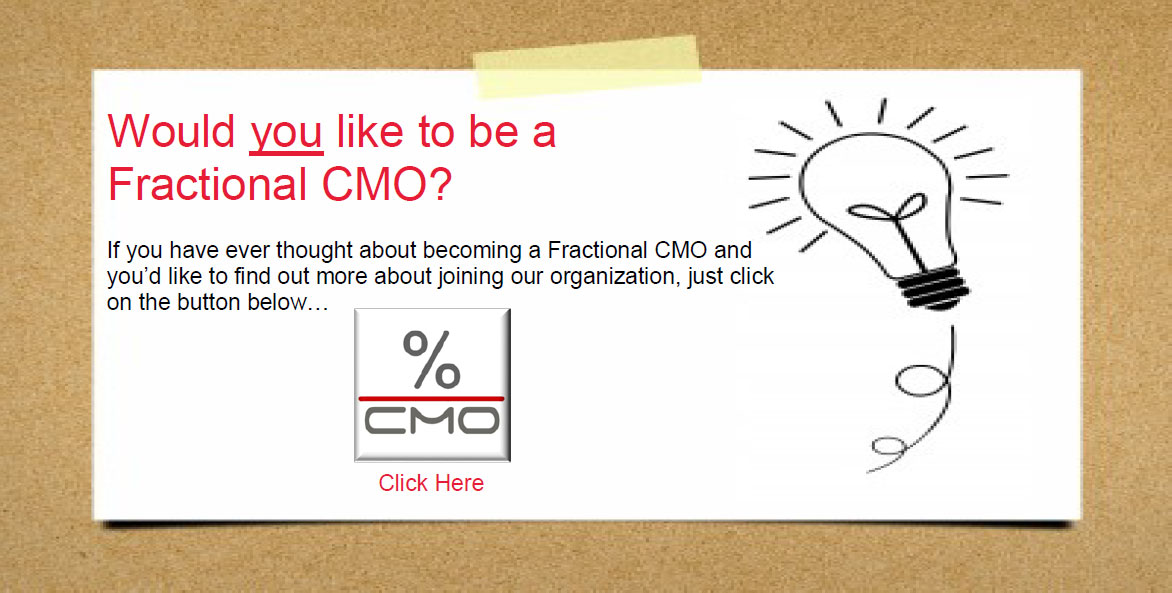In this issue:

Not All Marketing Tools Are Expensive!
As a business owner and/or the person in charge of marketing in your organization, you have probably asked yourself: “What would be the best way to engage leads and customers, sell more, and stay ‘top-of-mind’ with my target audience?”
There are several marketing tools to help you accomplish these goals. However, in this particular newsletter, we will focus on… newsletters!
Email newsletters are one of the most effective tools that help you engage leads and customers, sell more, and stay ‘top-of-mind’ with your target audience. And due to its low cost, this marketing tool provides an incredible ROI!
Here are some darn good reasons to send newsletters:
|
|
If you are serving or targeting more than one segment (as discussed in previous newsletter), you may want to consider multiple versions of your newsletter to address the varying needs of different segments. Have fun with your newsletters and engage your audience – Here are a few ideas:
- Conduct contest
- Ask for articles
- Run a survey
- Feature customers using your product or service by writing articles about them and/or displaying pictures
- Include links to relevant information
- Provide special offers to email recipients
If you need our help, Fractional CMO is always here to answer questions and help you with anything marketing-related.
Duke Merhavy, MBA, Ph.D.
President & Chief Marketing Officer
Marketing Lingo: “Slogan or Tagline”
In marketing, a slogan or tagline is a simple and catchy phrase accompanying a logo or brand, that concisely and succinctly expresses a product or brand’s appeal and makes it more memorable.
Ideally, the slogan should:
- Be short, striking, or memorable
- Express what the logo or name cannot on their own
- Articulate the most important argument and benefits of the (much longer) value proposition
- Become an identifiable and integral part of the brand identity
Unlike company names or logos, it is more acceptable to replace or otherwise modify a slogan or tagline when market conditions or company circumstances make it necessary.
‘Marketing Lingo’ is a regular column in which we define, or otherwise explain, terms often used in marketing but not necessarily correctly or properly by some
What Is Fractional CMO?
Hiring a full-time CMO (Chief Marketing Officer) is often not cost-effective for most small-to-mid-sized businesses (SMBs). We offer SMBs senior-level expertise, experience, and a holistic marketing approach, on a part-time basis for a fraction of the cost.
Fractional CMO is dedicated to your success, and our mission is to turn your vision into reality. Click on the short explainer video to the right for a quick explanation.

The following article was written by Ted Sprink who is the Managing Director of Integrated Growth Strategies (read more about Ted Sprink below)
Are Old-School Silos Negatively Impacting Your Company’s Harmony and Performance?
New Trend Utilizing “Fractional Executives” Minimizes the Infamous “Silo Effect” that Hinders Your Mission, Goals, Objectives and Growth Initiatives.
 Silo mentality as defined by the Business Dictionary is a “mindset present when certain departments or sectors do not wish to share information with others in the same company. This type of mentality will reduce efficiency in the overall operation, reduce morale, and may contribute to the demise of a productive company culture”.Through the years the “Silo Effect” has referred to lack of communication and cross-departmental support within a company. The larger the company, the more pronounced the Silo effect is likely to be. Silos focus on and protect their own goals, often ignoring the needs of executive management, fellow managers and co-workers.
Silo mentality as defined by the Business Dictionary is a “mindset present when certain departments or sectors do not wish to share information with others in the same company. This type of mentality will reduce efficiency in the overall operation, reduce morale, and may contribute to the demise of a productive company culture”.Through the years the “Silo Effect” has referred to lack of communication and cross-departmental support within a company. The larger the company, the more pronounced the Silo effect is likely to be. Silos focus on and protect their own goals, often ignoring the needs of executive management, fellow managers and co-workers.
Silos are often synonymous with the concept of “turf war” and are more often than not the result of unclear boundaries, confused responsibilities, awkward internal competition, petty jealousies, personal insecurities, lack of managerial ability and fear of being marginalized. The Silo builder’s desire is to be indispensable to the company, often accompanied by the limiting of access and restricting the flow of information to and from the Silo.
In many cases, Silo builders lack entrepreneurial skills and a creative nature that companies require for growth. Accordingly, they consciously pose as technical or tactical experts. This expertise, provided by a team player, is indeed crucial for the health of a company, particularly in core functions that do not require creativity. Notwithstanding, Silo builders are often petty and controlling personalities and practiced micro-managers, utilizing criticism of co-workers’ creativity, and opposition to innovation, to protect their role in the organization.
Silos, by definition reflect a lack of integration. By extension, they establish a conscious level of isolation which minimizes broad team-based practices. They are often orchestrated to thwart company efforts to innovate improvements in products, services and processes. Silos create dissent, advance a culture of distrust, waste resources, hinder productivity; and jeopardize company mission, goals, objectives and growth initiatives.
Executive management must establish a standard of healthy cross-functional vision sharing. The company’s mission, goals, objectives and growth initiatives depend on team players…not self-absorbed “protectors of the Silo”. It is the duty of the executive management to overcome Silo-based counter-productive organizational weakness.
In recent years a trend has evolved to allow executive management (and advisory boards) to utilize management experts engaged from outside the organization. Oftentimes a full time senior manager is not within the scope or budget of a growth-stage company. Outside expertise is available for…literally…a fraction of the cost.
A Fractional executive can be engaged to provide expertise in product development, strategic alliances, distribution channels, recruiting, finance, workflow, investor cultivation, public relations, advertising, sales, marketing, customer service and client loyalty & retention programs. This expertise is often CEO, COO, CFO, CMO, CIO HR and Legal capable of establishing or continuing a company’s growth in a healthy cross-functional manner; and can dispense with information, communication and creative barriers associated with Silos.
The Fractional and Contingent executive will have the professional pedigree and personal style to dispense with Silos for the purpose of placing company functionality in an environment wherein all departmental managers embrace the same vision, mission, goals, objectives and strategic initiatives.
These engagements are “Fractional” or “Contingent” in nature, and essentially represent a “Visiting” expert’s ability to cost-effectively join the company for the purpose of evaluating the vision, mission, goals, growth objectives and strategic initiatives necessary to prioritize and advance growth and profitability.
This evaluation is clearly intended to lead to the recommendation and implementation of improved communication, organizational structure, workflow, productivity and harmony.
Fractional refers to an executive engaged either on a part time or contract basis incorporating specific functions for a specific period of time, on an independent contractor basis. Naturally, engagements are Contingent in nature.
The trend to visiting executives indicates that fractional, contingent and independent contractors reflects an emerging resource available to contribute to company success. The availability of excellent senior level talent to growth-stage companies has never been better. Staffing Industry Analysts annually surveys large companies with more than a thousand employees reflected in 2014, the average share of contingent labor landed at 18 percent, up from 12 percent in 2009.
According to study done jointly by Elance-oDesk and the Freelancer Union, 53 million people — or 34 percent of the workforce — performed contingent independent contractor work in 2014.
MBO Partners’ most recent “State of Independence in America” workforce report revealed 30 million Americans classify themselves as independent workers, either as “solo-preneurs” who work independently as their only source of earnings, or “side-giggers” — performing outside assignments. This number is projected to grow to nearly 40 million by 2019.
Recently, supply management firm Ardent Partners released its “The State of Contingent Workforce Management: The 2014-2015 Guidebook for Managing Non-Traditional Talent.”
After polling some 200 HR, procurement, and finance executives, Ardent’s research underscores the rise of the fractional contingent and independent contractor worker class. Specifically, the firm found:
- 92 percent of businesses indicated non-traditional staffing was a vital to their overall corporate strategy.
- 32 percent of the average company’s workforce fell into the contingent or contract-based category.
- By 2017, contingent workers, including independent contractors, statement-of-work-based labor and freelancers, will account for nearly 45 percent of the world’s total workforce.
Fractional, Contingent and Visiting expertise has been referred to as “executives as-a-service”. Engaging executive talent on a cost effective fractional basis, capable of eliminating the inefficiencies of Silos, is worthy of consideration by all companies seeking to drive revenue, enhance brand equity and increase market share.
Ted Sprink is the Managing Director of “Integrated Growth Strategies”, an advisory firm established in 2011 to develop and implement marketing strategies and sales initiatives to growth-stage companies, positioning their unique value and competitive advantages to solve problems for the benefit of their customers. Sprink can be contacted at tsprink@integrated-growth.com or 760-604-0277.
Take Advantage of Us
Give us a call at 888-412-2236 or click on the button below to request a complimentary Marketing Needs Assessment, or to ask us a question regarding your most pressing marketing or sales challenges.





